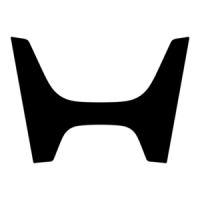8
Refuel With Care
Petrol is extremely flammable and petrol vapor can explode. Refuel
only outdoors, in a well-ventilated area, with the engine OFF. Never
smoke near petrol, and keep other flames and sparks away. Always
store petrol in an approved container.
Wear Protective Clothing
Wearing protective clothing will reduce your risk of injury. Long pants
and eye protection reduce the risk of injuries from thrown objects.
Sturdy shoes with aggressive soles will help protect your feet and give
you better traction on slopes or uneven ground.
Stop the Engine When Not Mowing
If you need to leave the mower for any reason, even just to inspect the
lawn ahead, stop the engine by releasing the blade control lever.
Avoid Slopes
Avoid steep slopes of more than
20°.
Mow across slopes, not up and
down. Be careful when changing
direction. Mowing on a slope
when the grass is damp or wet
could cause you to slip, fall, and
lose control of the mower.
Mowing on steep slopes can
starve the engine of oil, causing engine damage that is not covered by
the LIMITED WARRANTY (page 22).
Keep all four wheels on the ground, and be careful to avoid losing
your footing and your control of the mower. Keep a firm grip on the
handlebar, and walk, never run, with the mower. Be very careful when
mowing uneven or rough ground.
If stuck, do not kick or shove the mower with your foot. Use the
handlebar to control the mower.
Avoid Obstacles
Gravel, loose stones, and landscaping material can be picked up by
the mower and thrown many feet with enough force to cause serious
personal injury and/or property damage. The best way to prevent
potential injury from thrown objects is to release the blade control
lever to stop the blades before reaching areas with gravel, loose
stones, or landscaping material.
Be careful when mowing over obstacles that stick up above the
surface of the lawn such as sprinkler heads, paving, edging, raised
tree roots, etc.
If the blade hits something, or if the mower starts to vibrate, stop the
engine immediately, disconnect the spark plug cap, and check for
damage (page 11). Striking objects may damage the blades, bend the
crankshaft, and/or break the mower deck or other components.
Vibration usually indicates serious trouble.
The LIMITED WARRANTY (page 22) does not cover parts damaged
by accidental impact collision.
Operating the Controls
Blade Control Lever
The blade control lever must
be pulled back against the
handlebar to start and run the
engine. The blades start to
rotate when the lever is pulled
back against the handlebar
and the recoil starter grip is
pulled.
Continue to hold the lever
fully against the handlebar.
This will keep the engine and
blades rotating smoothly and
prevent premature wear to
the flywheel brake system.
Release the blade control
lever to stop the engine and stop blade rotation whenever you need to
leave the mower.
Starting the Engine
The blades turn when you start the engine. Start the engine in a clear
or mowed area where the blades can turn freely.
Before starting the mower, make
sure the starter rope is not
routed below the right handlebar
support tab as shown. The rope
will quickly be damaged during
starting.
1. Turn the fuel valve to the ON
position (page 3).
2. Pull back on the blade
control lever and hold it
against the handlebar.
3. Pull the starter grip lightly
until you feel resistance, and
then pull briskly. Return the
starter grip gently.
To ensure easy restarting and
maximum performance from the
Auto Choke System, allow the engine to run for at least three minutes
after starting a cold engine before shutting down. This minimum run
time will be longer if the temperature is below 21°C.
Continue to hold the blade control lever against the handlebar; the
engine stops when the blade control lever is released.
Stopping the Engine
1. Release the blade control lever to stop the engine.
2. If your mower will not be used for 3 to 4 weeks, we recommend
running the engine’s carburetor out of fuel. You can do this by
leaving the fuel valve OFF, restarting the engine and running it until
it stops. See “AVOIDING FUEL-RELATED PROBLEMS” on
page 18 if you don’t plan to use your mower for a month or more.
3. Clean your mower after each mowing; refer to “Cleaning” on
page 14.
WARNING
A worn, cracked, or damaged blade can break, and
pieces of the damaged blade can become dangerous
projectiles.
Thrown objects can cause serious injury.
Inspect the blades regularly (see page 11), and do not
operate the mower with a worn or damaged blade.

